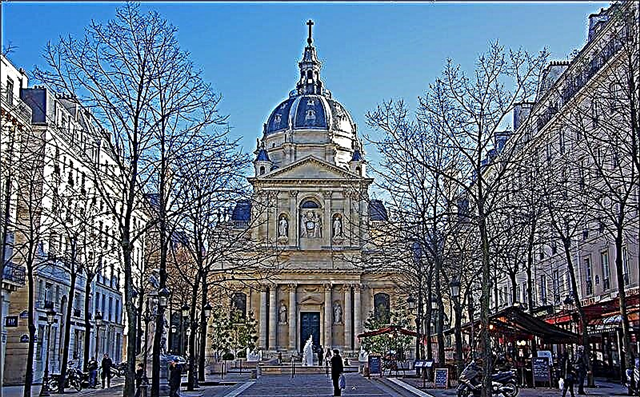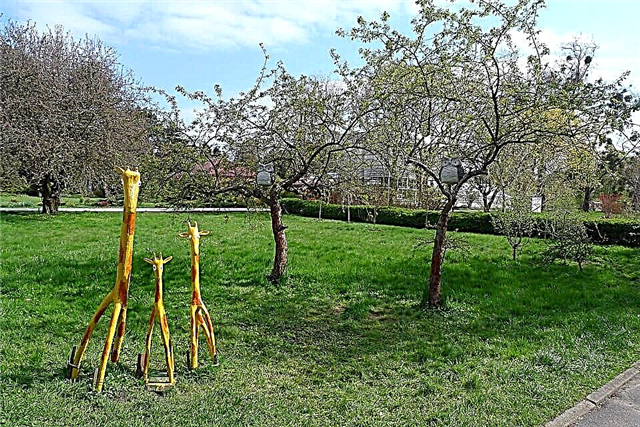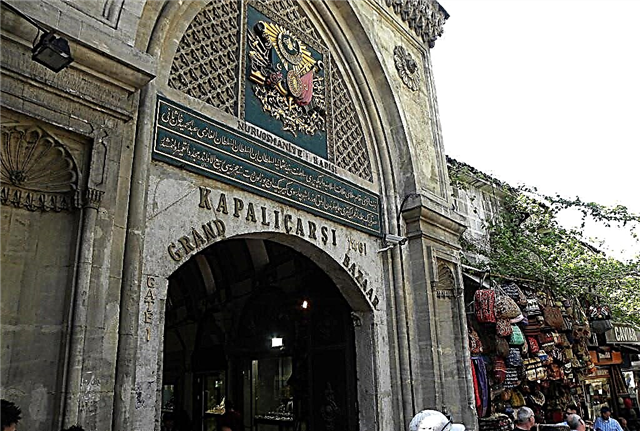It is impossible to imagine any eastern country without a bazaar. It can be called a separate state, with its own history, traditions, emotions, various goods, fragrances of spices and a multi-voiced bargaining public.

And the most grandiose such structure is the Grand Bazaar, built in the center of Istanbul in 1461. In his story, like in a fairy tale, there were tragic and joyful moments. He, like a Phoenix bird, burned down several times and was reborn from the ashes in order to again delight people with its scope, brilliance and luxury. But let's dwell on this in a little more detail, as it will help to understand the peculiarity of the architecture of this trade labyrinth.
History of the Grand Bazaar

The first Inner Bedistan, as one of the covered parts of the market is called, was founded during the reign of Byzantium, which lasted until 1453, until Sultan Mehmed II liberated Istanbul from the rule of the Romans. After that, the grandiose construction of the market began, where it was possible to buy clothes, colorful fabrics, jewelry, dishes, interior items, the famous oriental spices and sweets.
Until now, on the territory of the Inner Bedistan one can find ancient jewelry and bijouterie, icons, sabers and daggers, the handles of which are inlaid with precious and semiprecious stones. Also, the attention of visitors will be attracted by silver dishes and candlesticks, ancient coins, furniture and so on. If you look closely at all these things, you will see the whole history of Istanbul, with its beautiful romantic, heroic, and sometimes tragic past.

The first fire took place in 1546, after Suleiman the Magnificent ordered the construction of the second Sandal Bedstan. In those days, wood was the main building material, so there was nothing surprising in the fact that most of the bazaar burned down. Rebuilt again, it was again damaged by fire almost a hundred years later in 1651. But the fire of 1710 made the then ruler Mustafa II think about the construction of stone buildings.
Now the fire was not a big threat to the market, but the powerful earthquake of 1894 destroyed a large part of it. It took more than one year to restore, after which it seemed that there was no need to doubt the reliability of the buildings. And then a huge fire broke out in 1954. Only five years later, the gates of the Grand Bazaar reopened to visitors, the number of which ranges from two hundred and fifty to four hundred thousand people a day.
Layout of the Grand Bazaar

As already mentioned, the bazaar expanded and built up around the Inner and Sandal Bedstans. Now its area has reached thirty-one square kilometers, on which 4,400 small shops, 12 mosques, a dozen warehouses, more than two thousand ateliers, numerous cafes, currency exchange offices and even a school and a bathhouse are perfectly adjacent. On the territory of this architectural complex, 18 fountains gurgle, hospitable doors of forty hotels open, numerous streets are decorated with columns, and from above all this is crowned with numerous domes painted with national ornaments and lined with mosaics.
The chaotic arrangement of streets inside Kapala Charsi, as the inhabitants of Istanbul call the Grand Bazaar, is a symbolic display of all the historical changes that have taken place here over six centuries.

You can get inside this grandiose structure through any of the eighteen gates, each of which has its own name. It is worth remembering it so as not to get lost inside the maze of streets. Local residents will be able to suggest how to find the right exit, even if tourists do not know Turkish.
Shopping at the Grand Bazaar

The ability to bargain here is elevated to the rank of art. A person who first came to Kapala Charsi may be shocked by prices. However, knowing local customs, after the seller announces the value of the item, the buyer should start bargaining. The main thing is to do it confidently and persistently. A confused and embarrassed client immediately becomes an easy prey to dictate his terms to. Tourists should be well aware that the seller has been honing his skills in bargaining for many years, so he can only be surpassed by showing a certain amount of ostentatious indifference and making several attempts to leave without a purchase.
Working hours

The Grand Bazaar is open daily from 9.00 to 19.00. Weekends are considered to be Sundays and religious holidays when all gates are closed to visitors.
In conclusion, it should be added that a visit to the Grand Bazaar can take a whole day. Almost no one can come here to look with one eye. The force of attraction of this place is akin to gravity, which prevents a person from leaving the surface of the earth. Therefore, when scheduling excursions, you should not plan other activities for this day.
Recommended for viewing Independently in Istanbul.











